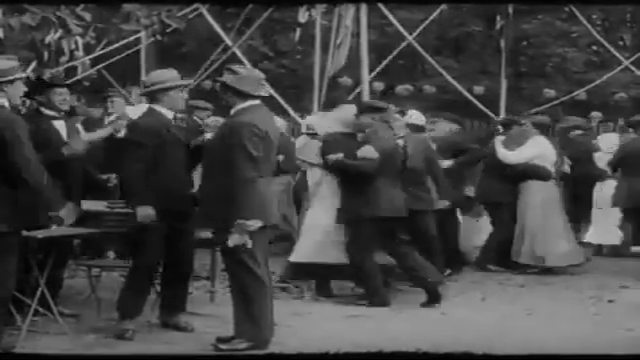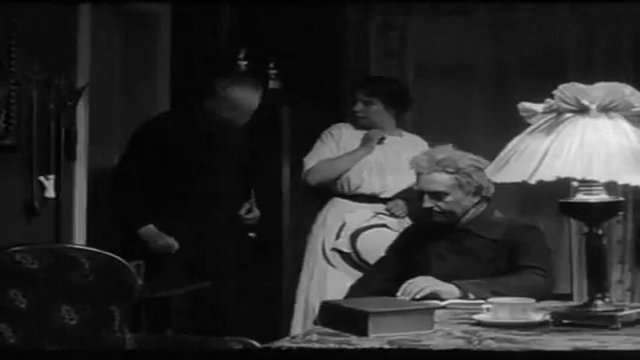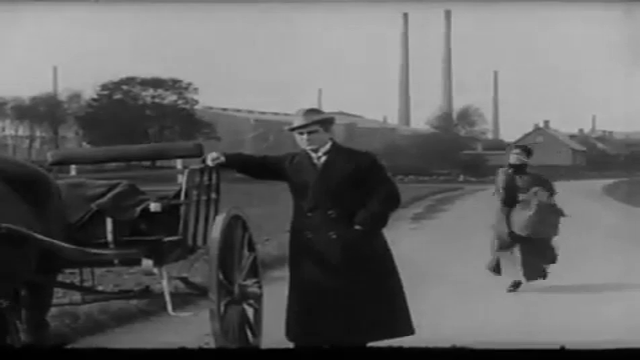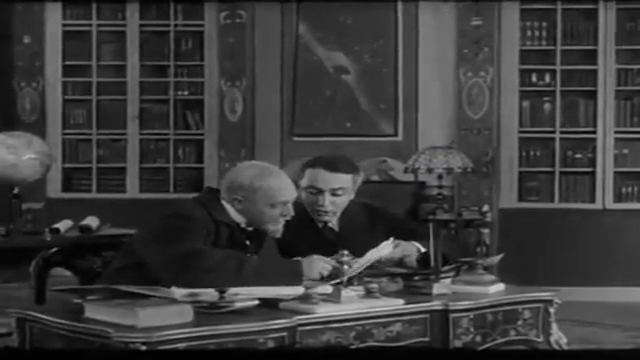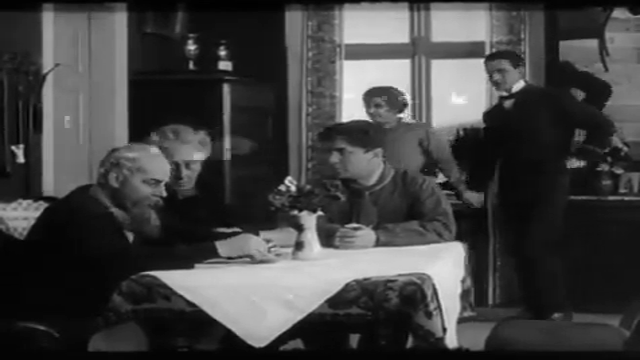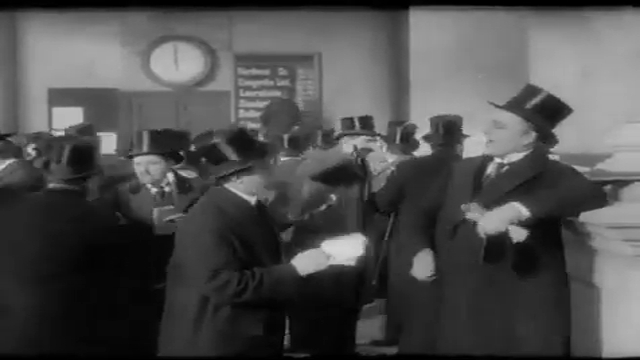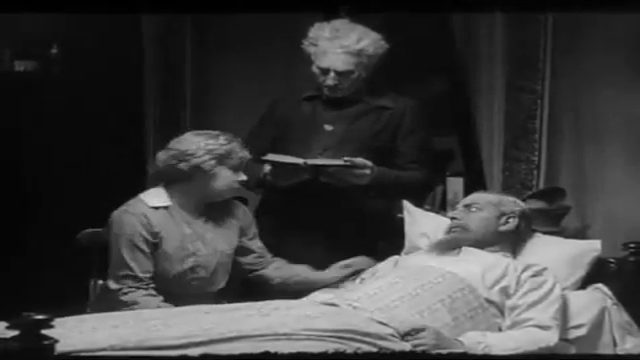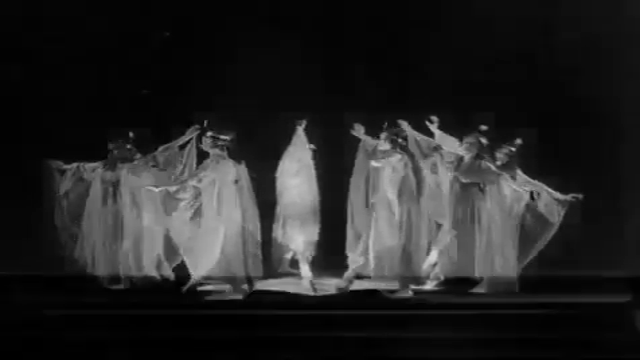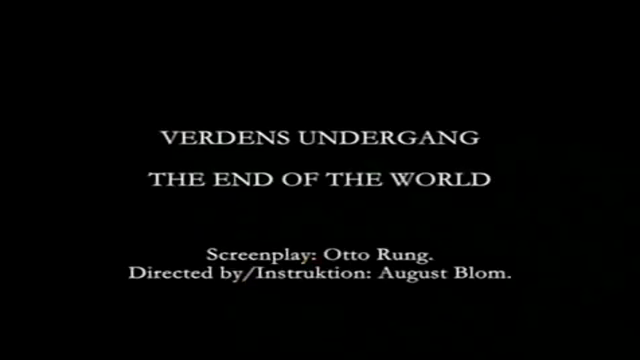
#407 – The End of the World (1916)
The End of the World (1916)
Film review #407
Director: August Blom
SYNOPSIS: When it is discovered that a comet is due to pass by Earth, panic and uncertainty over whether the comet will actually strike the planet. Stoll, a stock broker, sees an opportunity to make some easy money preying on people’s fears, but when the danger becomes too real, he and his wife must return to the small mining town which she fled in order to marry Stoll…
THOUGHTS/ANALYSIS: The End of the World (Verdens Undergang, also sometimes titled The Flaming Sword) is a 1916 Danish science-fiction film. The film starts off with the inhabitants of a small mining town visited by the mine’s owner, Stoll. When Stoll meets Dina, the daughter of the mine foreman at a dance, he suggests that she run away with him back to the city. Following a chastising from her Father about being a “harlot” for staying out late on her own (such as it was in 1916 I guess), Dina decides to run away with Stoll, leaving behind her Sister, Father and her friend Flint, who had hopes of marrying her himself. Fast forward a few years and we see that Stoll is a successful financier whose stock market dealings have left him very rich, and his now wife Dina has everything she could ideally want. The beginning of the film really takes some time to establish the characters and their relations. Stoll is the focal point of much of the film, and while he is marked as the villain throughout much of what is going on, he is still portrayed as having some humanity in his faithfulness and dedication to his wife. Ultimately, his manipulation of the stock market and his treatment of the mine’s workers leave him as very much an enemy to many of the other characters. Being perhaps one of the first disaster movies ever, it does the job of portraying how the end of the world impacts a number of different people from different walks of life.
When Professor Wisemann sees a new comet through his telescope coming towards Earth, the discovery generates a lot of uncertainty and panic across the world, as no one seems to know if the comet will hit the Earth or not. Stoll learns from his brother that the comet will probably hit the Earth in northwest Europe and cause significant devastation, and devises a scheme to buy a large number of stocks while there is panic, and have his friend at a newspaper print the (false headline) that the comet will not hit, leading Stoll to sell his stocks at a higher price and become even more wealthy. Even when Stoll learns of the comet’s impact, he insists the newspaper print the misleading story that it will pass by Earth so he can fulfil his scheme. Again, Stoll is made out to be the villain because profiteering over the end of the world is hardly going to go down well is it? Meanwhile, events in the mining town are moving along as Dina’s sister says farewell to her sweetheart Reymers, who has just graduated as a sailor and is leaving on board a ship.
In the third act, with the comet looming ever closer to Earth, Stoll realises the only place he can take shelter is the mine in the town where he met Dina: however, the populace are less than happy at Stoll over the way he has treated their town, and when they learn he is coming to town, Flint organises an attack on Stoll. Dina is also reluctant to return to the town, but is finally convinced. As the comet gets closer, Stoll organises a party for the end of the world, while the workers decide they are going to storm the party, setting the conflict for the final part of the film. As the comet enters the atmosphere, fragments start to rain down over the town causing mass destruction. The special effects are quite remarkable for their time, even if they’re typically just sparks flying over model buildings. Also the image of a comet overlaid into the sky of some scenes gives a feeling of impending doom. The film enjoyed a fair amount of success when it was released; in part capitalising on the fear and uncertainty surrounding Halley’s comet passing Earth a few years before, and the ongoing war in Europe which alerted people to a level of destruction they had never considered before. The film’s showing of mass destruction from meteors, houses being shaken and destroyed, and huge tidal waves gives a fair variety to the devastation and gives the feeling that nowhere is safe in these situations.
The film ends with most of the characters dying: Stoll and his wife are killed in the mine they are hiding in, Flint chases them, but the release of deadly gas kills him too. Dina’s Father passes away, and at the end we see Edith, Dina’s sister alone as she has miraculously survived. She goes up to the top of the church and rings the bell in the hope of alerting other survivors. Coincidentally, it turns out Reymers has managed to return to shore from the ship he was on, and on hearing the bell, the two are reunited to end the film on a somewhat happy note, that even through all the destruction, a sliver of hope has survived. Overall, The End of the World is a well-written spectacle that offers effects and a speculative scenario that film-goers would probably have not seen before. It’s relevance to the time is clear in regards to the amount of destruction the world was experiencing through war. The film does a good job of establishing a variety of characters and connecting them to each other, as we see how the disaster will affect people of different class and occupation, which has become one of the foundations for disaster movies. The spectacle would have engrossed movie-goers of the time, but there’s enough substance in the characters to appreciate the story underneath the spectacle too.


